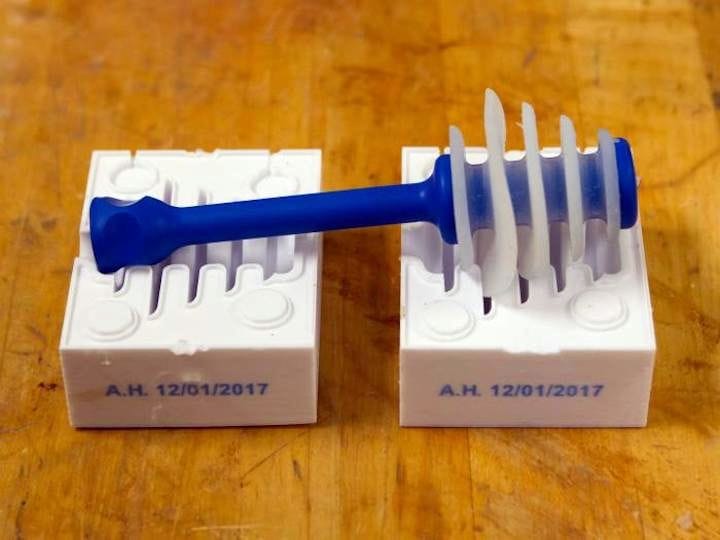![Rize may have discovered a large market for their unusual technology [Source: Rize]](https://fabbaloo.com/wp-content/uploads/2020/05/image-asset_img_5eb0a8f200b61.jpg)
I’m reading a white paper from Rize about using their equipment for medical uses, and perhaps they are on to something here.
Rize is a Massachusetts-based company that produces an industrial 3D printer with an unusual and unique process: while they are extruding thermoplastic filament in the usual manner, their gear includes a multi-head inkjet tool that can apply liquids as required during the print.
That might sound a bit strange, as the point of 3D printing is to obtain a solid object. But Rize leverages this in several very interesting ways.
Their first leverage was a fascinating way to ease the use of support material, which is almost always a huge pain to remove. In the Rize concept, they squirt a thin layer of liquid on surfaces that are about to receive a layer of support material. This liquid acts as a bonding suppressant, and while the support does “support” the structures above it, it is not fused to the model material. That makes it ridiculously easy to remove the support material manually – just pull it off.
Another leverage of the inking system is to introduce color(s) into the print by using colorations. Rize software allows one to “embed” single color images on prints that cannot be worn away. There’s no second material; the single material used is simply selectively colored.
It’s a great way to add images or labels to a printed item. But while this is a fascinating technology, what exactly would it be used for?
Earlier this year Rize announced a software system that could, for example, automatically generate part and serial numbers for embedding into prints. Now that sounds very powerful, and it is.
But there’s another question: who would need this particular feature? What industry could be interested?
The answer seems to appear in Rize’s white paper, in which they investigate how this feature could be used for certain medical applications.
Medical applications are a bit weird to 3D printing, as they bring a raft of unusual requirements that are not present in “conventional” 3D printing where you are typically just “making parts”. The Rize paper lists some of the challenges of the medical environment:
- Durability – Low water absorption and surface energy, high chemical resistance and strength
- Environmental considerations – Safety and cleanliness of the entire process, as well as the materials and parts
- Sterilization requirements – Dependent on the materials to be used
- Security – Confidentiality and traceability, especially if multiple iterations are required, and to link a patient’s ID and scan data to the 3D printed part
Aha! Now we can see a true, practical and necessary use for the Rize auto labelling technology.
Tracking the lifecycle of a part in the medical industry would certainly require individual parts to be labelled in an indestructible manner. The code on the label could then be used in various databases as the medical part travels through its biological usage lifecycle. For example, if a part was to be sterilized, the medical tracking database could record that part #723 was indeed sterilized at a particular time and place.
It gets more interesting when the parts are personalized to a patient. The labelling system could certainly apply not only a part and serial number, but also a patient identifier, should the part be customized for an individual.
This application seems to make a lot of sense.
But what does this mean for Rize, one of the newer players on the 3D print scene?
Most startups begin with initial notions of their goals, but along the way, experience often shows other avenues to success. It’s possible that this may be the moment that Rize “discovers” the sweet spot for applying their technology.
Could Rize morph into a medically-focused 3D printer company? Stranger things have happened.
Via Rize











